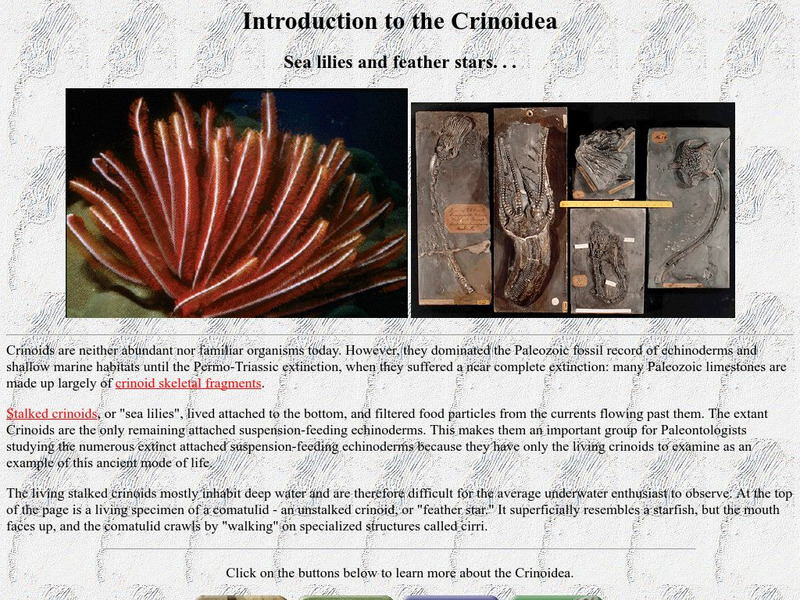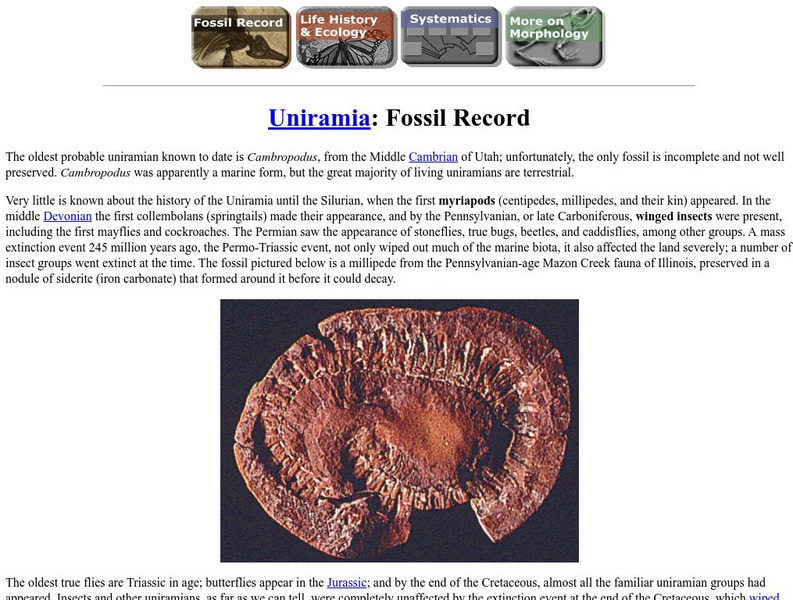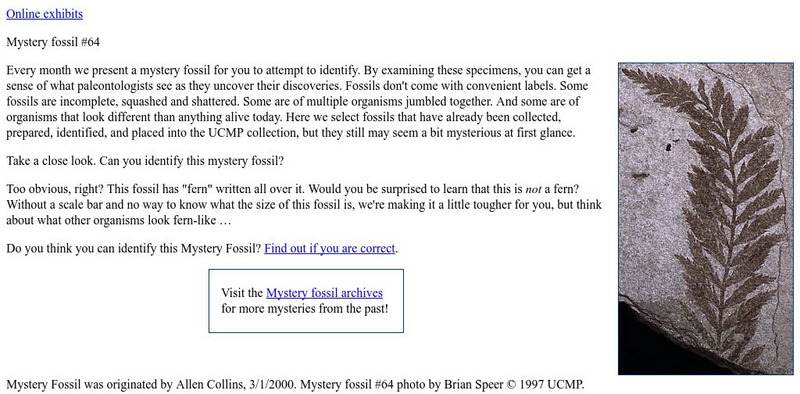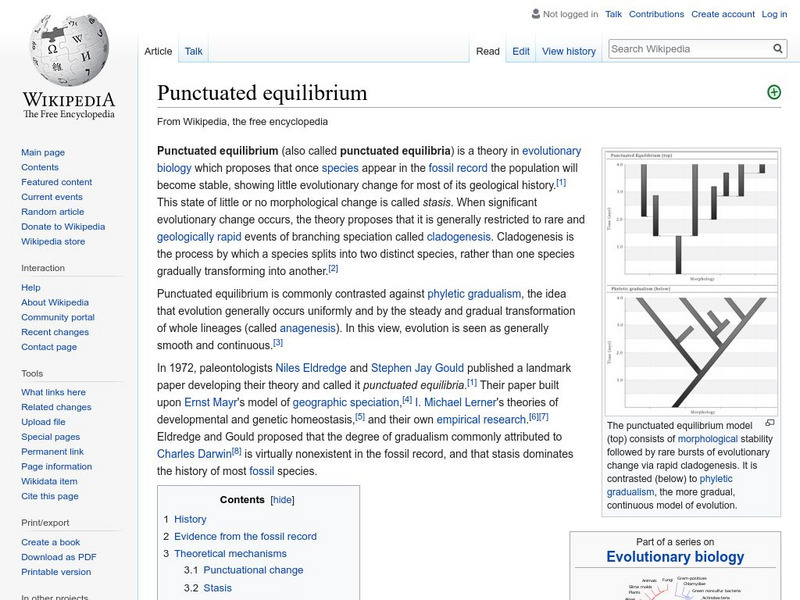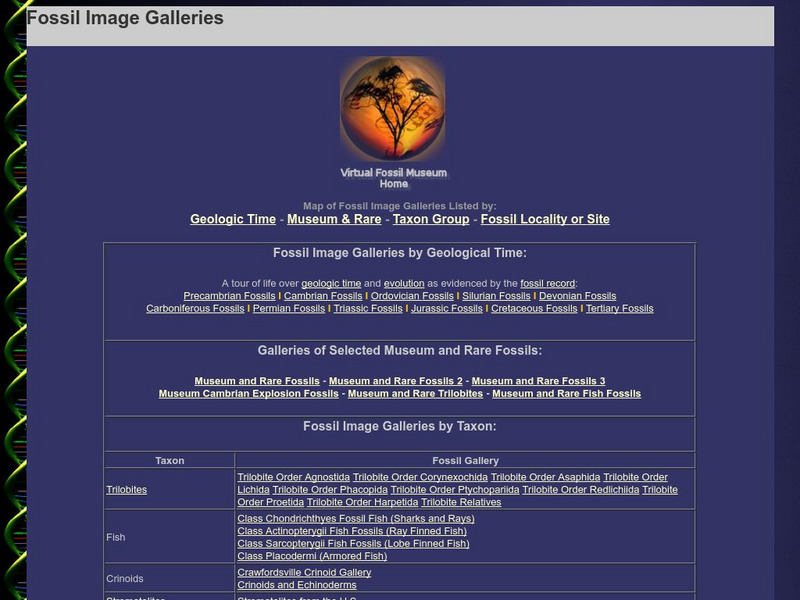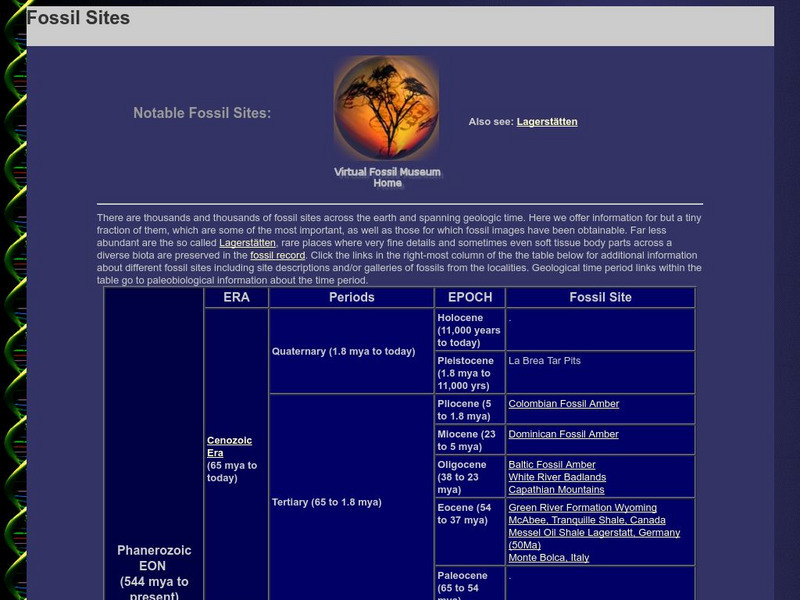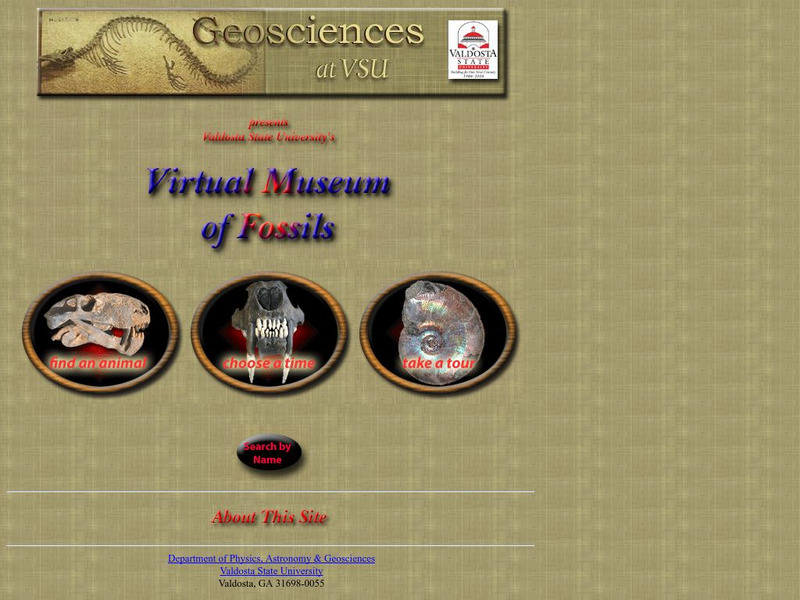Hi, what do you want to do?
University of California
Ucmp: The Ophiuroidea
All about the Ophiuroidea. Includes a picture of the fossil along with the history.
University of California
Ucmp: Introducing Crinoids
This site from University of California is an introduction to crinoids with pictures. Click on another link to learn about the history and ecology, fossils, or morphology.
University of California
Ucmp: Uniramia
General information on the evolution of the myriapodes (centipedes and millipedes) and a look at the fossil record.
University of California
Ucmp: Mystery Fossils
Each month a new mystery fossil is presented for students to try to identify, giving them a taste of what paleontologists are confronted with in their work.
University of Nebraska
Ashfall Fossil Beds State Historic Park
The Ashfall Fossil Beds are located in Nebraska. Much of the research done there is conducted by scientists from the University of Nebraska and the Nebraska State Museum. The history, geology and paleontology of the site are described....
University of California
Ucmp: The Tyrant Lizards: The Tyrannosauridae
This site from the University of California provides basic information on T. rex with links to related material great for a quick introduction.
University of California
Ucmp: Inferring the Possible Speed of Dinosaurs
An essay detailing the evidence used to determine how quickly dinosaurs moved. Includes pictures of fossilized dinosaur tracks.
Science Education Resource Center at Carleton College
Serc: How Old Is That Thing on That Rock?
Students using magnifying glasses to observe collected fossils, and then make inferences and hypotheses about the age of the specimens.
Science Education Resource Center at Carleton College
Serc: Indentification of Earth Materials
Students identify the fossils and materials, and form a hypothesis as to how they were formed and what it was before preservation.
Science Education Resource Center at Carleton College
Serc: Geo Logic: Lagerstatten and Unique Fossils
With GEOLogic questions, young scholars are asked to match several unique fossils with the sites and locations where they were found, as well as their geologic age.
National Institute of Educational Technologies and Teacher Training (Spain)
Ministerio De Educacion: La Tierra, Un Planeta en Continuo Cambio
For this unit you can learn about the history of our planet Earth. It has 25 interactive activities.
Wikimedia
Wikipedia: Punctuated Equilibrium
This brief explanation of punctuated equilibrium includes paragraphs on the history of the theory and the controversy surrounding it.
American Institute of Biological Sciences
Action Bioscience: Fossils and the Origin of Whales
Through fossils scientists have been able to study the evolution of whales. Read this article to take a closer look at the details.
TED Talks
Ted: Ted Ed: When Will the Next Mass Extinction Occur?
Borths, D'Emic, and Pritchard give a quick history of mass extinctions. [5:01]
TED Talks
Ted: Ted Ed: How Do We Know What Color Dinosaurs Were?
The microraptor was a four-winged carnivorous dinosaur with iridescent black feathers. But if our information about this dinosaur comes from fossils, how can we be certain about its color? Len Bloch shows how making sense of the evidence...
TED Talks
Ted: Ted Ed: Building a Dinosaur From a Chicken
Renowned paleontologist Jack Horner has spent his career trying to reconstruct a dinosaur. He's found fossils with extraordinarily well-preserved blood vessels and soft tissues, but never intact DNA. So, in a new approach, he's taking...
TED Talks
Ted: Ted Ed: How to Fossilize Yourself
Phoebe A. Cohen details the steps your body must take to find future fame as a fossil. [5:30]
American Museum of Natural History
American Museum of Natural History: O Logy: What's the Big Idea? Paleontology
Snapshot reference on paleontology explains how the fossil record drives this area of science.
University of Florida
U. Florida Museum: Fossil Horse Cyber Museum
An interesting site about prehistoric horses. Has a large gallery of fossilized horse pictures as well as an area explaining how a horse becomes fossilized.
Other
Fossil Image Gallery
Images of fossils are listed by taxon. Fossils are also listed by location and geologic era.
Other
Fossil Museum: Fossil Sites
Twenty different international fossil sites are listed with links to pictures of fossils found at each site.
Other
Carbon 14 Dating
Seven pages all about Carbon 14 Dating. Information on half-life, Carbon 14 used to date specimens and artifacts, limitations, charts and graphs. Michael E. Brown Ph.D. contests that the limitations of Carbon 14 dating support the theory...
Other
Valdosta State University: Virtual Museum of Fossils
This resource provides an interactive introduction to paleontology. Take a tour, search by animal or time period, and peruse for hot links throughout the museum.






